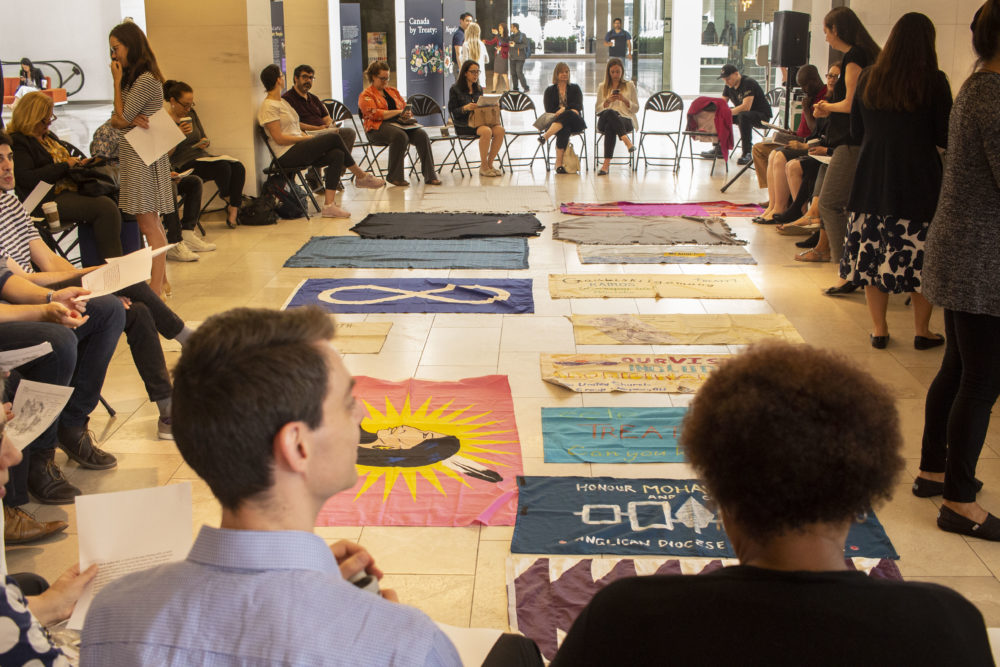Blog
Metrolinx Explores Importance and History On Lands It Works On and Operates
August 22, 2019Regular GO Transit customers, especially those who sit on the same vehicles and watch the same landscape pass by outside the windows, likely believe they’ve memorized the landscape.
The cities and towns and creeks – they blur past in a familiar way.
And this happens to a great many of the over 76 million GO train and bus passenger trips each year.

But how many customers wonder what history these lands hold? What stories the terrain could tell about other lives and those who moved about in other times?
For example, how many GO travellers know the land they move across using public transit was known as ‘Turtle Island’ by Indigenous Peoples for thousands of years?
Like every passenger on every GO Transit vehicle, the land we operate on has a unique and rich story to share. And at Metrolinx, we’re looking for ways to share and acknowledge the importance of that history.
For example, the main territory that we work, develop, operate and travel across is known as the ‘Dish With One Spoon Territory’. It is a treaty that took place between the Anishinaabe, the Mississaugas and the Haudenosaunee, that bound them to share and protect the land that is now known as Southern Ontario.
The dish, also sometimes called a bowl, represents the land and the spoon signifies that each Nation will only take what is needed and no more. The absence of knives represents that peace needed to be maintained. This treaty was recorded on a wampum belt, which was a way of recording laws, history, traditions and agreements using wampum beads strung together.
So what does this Treaty mean for us today? For Metrolinx it means that we are learning more about the history and contributions of Indigenous Peoples. It means that we have committed to building relationships with Indigenous communities and peoples. In March of this year, Metrolinx created its first Indigenous Relations Unit in order to begin its commitment to Indigenous community engagement and building strong, meaningful, mutually beneficial relations and partnerships that will positively impact the quality of life of Indigenous people.

Throughout the month of June, Metrolinx engaged in several learning opportunities to acknowledge Indigenous History Month. Metrolinx also began to provide territorial land acknowledgments at public meetings as a way to learn and understand its connection and responsibility to build relationships with Indigenous communities.
This included an event where Metrolinx’s Employee Resource Group, Anishinaabe Circle, in partnership with Oxford Properties, held a culturally immersive event on June 19, to help staff travel back 500 years into Canada’s past.
The colourful ‘KAIROS Blanket Exercise’ was an interactive history lesson that’s been used thousands of times in Canada. Participants, while walking on different blankets, explored the land, as well as the role of First Nations, Inuit and later Métis people. Amid onlookers, the 90-minute event – meant to foster understanding between Indigenous and non-Indigenous peoples.
Although we are making great strides, there is much more work to do – Metrolinx is only at the beginning of its Indigenous relations journey. Although new, the Indigenous Relations office at Metrolinx aims to strengthen our relationship with our Indigenous communities, and will continue building a framework and work plan that focuses on education, employment and engagement. As a Crown agency we want to ensure that we move beyond our Constitutional obligation and provide opportunities for Indigenous involvement and partnership.
When our passengers look out the GO train or bus window, we hope they enjoy the passing vistas of green spaces and ever-changing developments. But we hope look deeper, to understand a rich story that really started their journey.
To visit the story of a recent Blanket Exercise, click here.
Special guest blog by Metrolinx.


